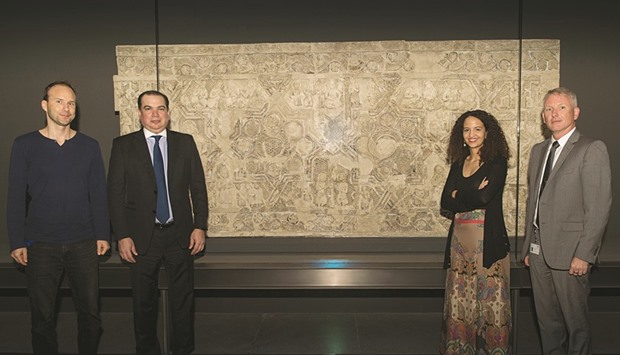Conservation of one of Museum of Islamic Art’s (MIA) most significant artworks – a monumental stucco panel from Iran dating from the 12th century, Saljuk dynasty – has been completed, Qatar Museums (QM) has said.
The project was a partnership between the Museum of Islamic Art (MIA) and Bank of America Merrill Lynch and formed part of the bank’s global Art Conservation Project.
The bank, one of the world’s largest supporters of arts and culture, supported the conservation efforts and marked the first time a financial institution ever partnered with QM and MIA.
“The panel is one of only three monumental stucco panels from the highly celebrated era of Islamic art history, and the much needed restoration of this iconic and important piece has enabled us to permanently display it to the public, for the enjoyment of residents and visitors in Qatar,” MIA acting director Daniel Brown said in a statement.
The panel, which features a compilation of the ‘princely cycle’, detailing feasting, hunting, music-making and the enjoyment of nature in the traditions of Persianate art and culture, is now on permanent display in MIA’s permanent galleries.
Conservation of the panel began in November 2012, and took almost four years to complete.
The project was led by the curatorial and conservation departments at MIA, with additional support from an archaeological illustrator from the University of Pennsylvania.
“Recognising the importance of preserving cultural treasures for future generations, we launched our Global Art Conservation Project in 2010,” said Arshad Ghafur, president of Middle East North Africa at Bank of America Merrill Lynch, who recently visited MIA to see the completed work.
Ghafur stressed that they will continue supporting MIA to help preserve heritage and tradition not only in the Middle East but around the world.
The other two stucco panels are currently in North America: one in storage at the Philadelphia Museum of Art, and the other belonging to a private collector.
The panel at MIA has been scientifically and rigorously examined and conserved.

A monumental stucco panel from Iran dating from the 12th century, Saljuk dynasty is now on permanent display at MIA.
